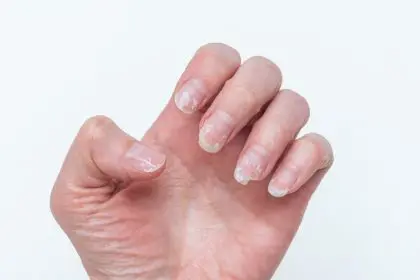Hair growth on the human body is a fascinating and sometimes perplexing phenomenon. While most people expect hair to grow on their scalp, eyebrows, and eyelashes, the appearance of hair in unexpected places can be both surprising and frustrating. Understanding why hair grows in these odd places requires examining the biological mechanisms, hormonal influences, and genetic factors that govern hair growth.
The science behind hair growth
Hair growth is a complex process regulated by various factors. Each hair follicle goes through a cycle consisting of three main phases: anagen (growth), catagen (transitional), and telogen (resting). The length of each phase determines the length and thickness of the hair. Genetics, hormones, and other biological factors influence this cycle.
Hair follicles and their distribution
Hair follicles are distributed unevenly across the body, with varying densities in different areas. This uneven distribution is largely determined by genetics and evolutionary adaptations. For instance, hair on the scalp provides protection from the sun and helps regulate body temperature, while the hair on other parts of the body, like the eyebrows and eyelashes, serves protective functions.
Hormonal influence on hair growth
Hormones are crucial in determining where and how much hair grows on the body. Androgens, such as testosterone, are particularly influential. During puberty, an increase in androgen levels triggers terminal hair growth in areas like the underarms, pubic region, and face. In some cases, hormonal imbalances can lead to hair growth in less typical areas, such as the ears, nose, or around the nipples.
Genetic factors
Genetics heavily influence hair growth patterns. The genes inherited from our parents determine hair growth’s density, texture, and location. Some people may have a genetic predisposition to grow hair in unusual places, a trait passed down through generations. For example, conditions like hypertrichosis, which causes excessive hair growth, can be hereditary.
Evolutionary perspective
From an evolutionary standpoint, hair serves various functions, including protection, camouflage, and sensory perception. While the need for body hair has diminished over time due to changes in lifestyle and environment, the genetic blueprint for hair growth remains. This can result in hair appearing in places that may no longer serve a clear purpose.
Common areas for unexpected hair growth
Several areas of the body are prone to unexpected hair growth. Understanding these can help alleviate concerns and guide appropriate management strategies.
Facial hair
While facial hair is common among men, some women may experience hair growth on their upper lip, chin, or cheeks. This can be due to hormonal imbalances, polycystic ovary syndrome (PCOS), or genetic factors. Managing facial hair often involves methods like threading, waxing, or laser hair removal.
Back and shoulders
Hair growth on the back and shoulders is more common in men but can also occur in women. This is often linked to higher levels of androgens and can be exacerbated by conditions like hirsutism. Treatments may include shaving, waxing, or professional hair removal techniques.
Ears and nose
As people age, it’s not uncommon for hair to grow in the ears and nose. This is believed to be due to hormonal changes and the natural aging process. Trimming and specialized hair removal tools can help manage this growth.
Nipples and areola
Hair around the nipples and areola is more common than many realize and is usually harmless. Hormonal changes during puberty, pregnancy, or menopause can trigger this growth. Plucking, waxing, or laser treatments are common methods to address this.
Managing unwanted hair growth
While hair growth in unusual places can be bothersome, several effective management options are available. These range from temporary solutions to more permanent treatments.
Temporary hair removal methods
- Shaving: quick and easy, but results are short-lived.
- Waxing: provides longer-lasting results but can be painful and cause skin irritation.
- Plucking: ideal for small areas but can be time-consuming.
- Depilatory creams: chemical creams that dissolve hair, but may cause allergic reactions.
Permanent hair removal methods
- Laser hair removal: uses laser technology to target and destroy hair follicles, offering long-lasting results. Multiple sessions are usually required.
- Electrolysis: involves inserting a fine needle into the hair follicle and applying an electric current to destroy it. This method is effective but can be time-consuming and requires multiple sessions.
When to seek medical advice
In some cases, excessive or unusual hair growth can indicate an underlying medical condition. If you experience sudden, rapid hair growth in unusual places, or if it’s accompanied by other symptoms like acne, menstrual irregularities, or weight gain, it’s important to consult a healthcare provider. Conditions such as PCOS, adrenal gland disorders, or thyroid imbalances may require medical intervention.
Conclusion
Hair growth in odd places is a common experience influenced by a combination of genetic, hormonal, and biological factors. While it can be surprising and sometimes unwelcome, understanding the underlying causes can help manage it effectively. Whether through temporary hair removal methods or permanent solutions like laser treatment, options are available to address unwanted hair growth. If you suspect an underlying medical condition, seeking professional advice is crucial for appropriate diagnosis and treatment. Embrace the uniqueness of your body, and remember that everyone has their own hair growth patterns and challenges.
















